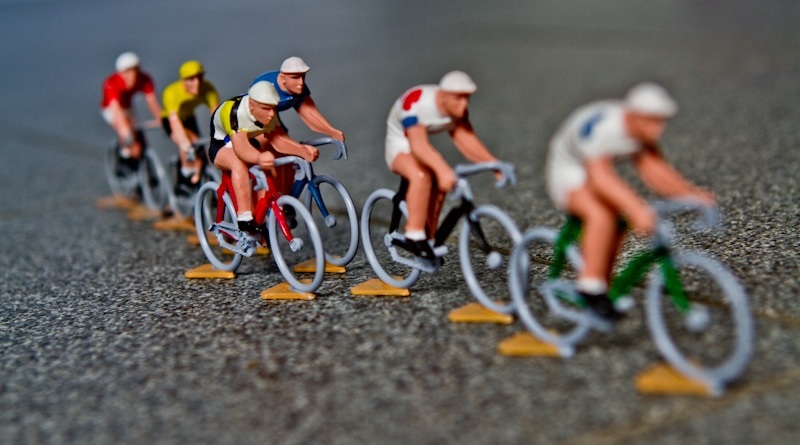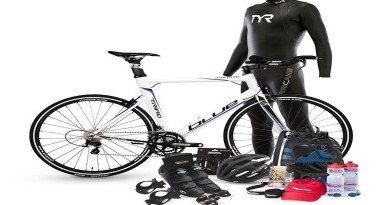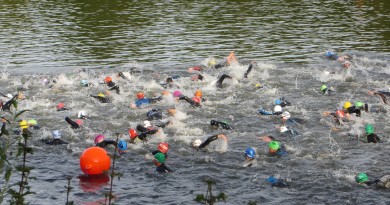Cycling Etiquette Tips
TUFF FITTY CYCLE ETIQUETTE
Conscious of our very busy roads, as cycle numbers increase thoughts had turned to establishing some cycle etiquette. Thames Turbo have a good one on their website and in contacting them the author gave us permission to replicate it for our use. Most of it is common sense, but communication is the key in order that everyone can look out for each other. Some of the comments are more relevant to the longer bike routes but please take the time to read this. Don’t feel daunted; by reading this you are more likely to understand some of the calls and actions taken by others when we are out together.
——————————
As Triathletes we compete as individuals but the Sunday bike ride is all about cycling as a pack, working together to get up those hills and staying together for the duration of the ride, no one gets left behind. When cycling with others, we all have a responsibility to look out for others’ safety as well as your own.
Here is a list of essential basic things to remember to keep it safe while cycling on your own and within groups. It is divided into the following sections:
· Do’s · Don’ts · Calls· Hand Signals
Please apply these rules next time you are out. You will be expected to adhere to them, and will be reminded by your fellow cyclists if you don’t.
Do’s
-
Follow the Highway Code at all times – it applies to ALL road-users.
-
Wear a cycle helmet, you won’t be allowed to ride if you do not have one.
-
Ensure your bike is road worthy, brakes are fully operational and that your tyres are pumped up to the recommended PSI (as written on the tyre).
-
Divide into smaller groups – be prepared to split into groups 10-12 maximum to be safe.
-
Cycle a maximum of two abreast in 2 close parallel lines where appropriate, focus on keeping it neat and tidy.
-
Ride with 1ft approx. between your front wheel and the back wheel of the rider in front. There should also be 1ft between your shoulders and the rider beside you.
-
Be prepared on small or busy roads to ride in single file.
-
Riders at the back of the pack to shout “Car back, single file” if there are vehicles behind. Listen and act on their calls, DON’T look back and check for yourself, as you will move off your line and may cause an accident.
-
Lead cyclists to navigate and point out hazards in the road by either shouting or using hand signals. Listen to them and act on the calls, and most importantly, repeat them for the cyclist behind you.
-
Ride directly behind the wheel of the rider in front. If you cycle in the middle of the two wheels in front of you, you WILL push the cyclist on your outside into the path of passing vehicles.
-
Brake as gently and smoothly as you safely can when riding in a pack
-
Cover your brakes at all times.
-
Talk to each other. Point out either with hand signals or shouts, all potholes, manhole covers and other dangers in the road that could cause punctures or accidents. Follow the hand signals and calls of the riders in front as they will have seen the danger before you and then you can all communicate down the pack.
-
If you are the back of the group and either see someone dropping or are being dropped it is your responsibility to call to the cyclists in front that the pace is too high. The pack must communicate this up to the front. The lead cyclists will not be aware if you start to drop. Ask them to slow down,
it is your ride too.
-
Ride at a steady pace, keeping the pack as a compact unit
-
Check over your shoulder for other riders or traffic before moving out to the right
-
Slow right down when passing horses, and pass them as wide as it is safe to do so.
-
If you are on the front, remember that people are following your calls. If you make a decision to pull out on a roundabout or junction, you need to call “Clear” or “Wait” to warn the pack of hazards.
-
If you are feeling tired let people know. Accidents happen when people are tired and lose concentration. Everyone gets tired, let people know so they can slow the pace down and tuck you in the pack to carry you home
-
Cycle with confidence. If you’re nervous you will tense up and then are less likely to be able to respond to things quickly.
-
Always cycle in your comfort zone. When the groups are organised take a look at the cyclists in your pack. You might be able to cycle with them for 1 hour at their pace, but can you do 3 hours?
-
Be realistic so that you enjoy the entire ride and don’t end up bonking after 1 hour, then forcing the pack to slow down for you
-
When approaching parked cars, if you see anyone sitting in the drivers side, CAUTION, they could open the door on you, so ride wide if possible, or stop if necessary
-
When cycling at dusk or night wear appropriate reflective bright clothing and ensure you have working lights on the front and rear of your bike.
-
Dress in appropriate clothing for the weather
-
Bring everything you might need. Prepare for every eventuality. For example, puncture kit, tyre levers, inner tubes, pump, Allen key set, helmet, waterproof jacket, food, water, money, mobile, contact details in emergency.
-
Plan your nutrition according to your ride duration. You will burn on average 500 calories per hour when cycling. You should be drinking one 750ml bottle of water every hour. You must have enough food to last the entire ride (riders may not wish to stop, especially if it’s cold or wet). Individual’s energy needs are different, but a guide for a 3 hour ride might be 2 bananas, 1 sports bar, 1 jam sandwich, 1 gel for emergency pick-me-up! Water is required as defined above.
Don’ts
-
Overlap wheels, or nudge in between the wheels of the riders in front. You will come off if they move off their line
-
Ride on tri / aero bars in packs as you will not be able to brake or steer quickly
-
Make any sudden movements/changes in direction off your line when in the pack. You are responsible for the cyclist behind you, they are following YOUR wheel they need to trust you.
-
Ride off the front. This is a group ride, not a race. If you want to go faster then let the others know what you are going to do and if no one wants to join you then go off and enjoy your ride alone.
-
Stop pedaling if you are on the front, even on downhills. The cyclists behind you will read this as you slowing and could be forced to brake and bunch up.
-
“Zone out” on the wheel in front. Keep aware of everything that is going on around you, look ahead and that way you can avoid most hazards.
-
Whip round the outside of the pack to get to the front unless in an emergency. Shout up the pack any communication. If you do need to get to the front then make sure you check in front and behind for cars, remember three abreast will push you out into oncoming traffic.
-
Pull out at junctions without looking, having heard the “Clear” call from a fellow cyclist. Check whether there is a vehicle coming yourself.
CALLS
These are some calls you might hear. It is essential that you repeat them down the pack so everyone can hear:
-
“Car Up/Front/Back” Keep tight to the cyclist next to you, and be prepared to cycle in single file
-
“Hole” Upcoming pothole to avoid. This can also be followed by a direction i.e “HOLE LEFT”.
-
“Slowing” Usually accompanied by a hand signal. The cyclist in front needs to slow down for some reason.
-
“Stopping” Brake!
-
“Wait” Usually at junctions to indicate there is a car coming
-
“Clear” To indicate that a junction is traffic free. You must check yourself and not rely on others.
-
“Heads Up” Hazard ahead, pay attention.
-
“Single out/ single file” Get into single file safely and promptly
HAND SIGNALS
These are some hand signals (other than the obvious left and right turns!) It is essential that you repeat them so everyone can see and pass it on:
-
Single hand in the air (up or down) Rider is signaling that he/she needs to stop or slow down. Usually followed by the call ‘Slowing’, ‘Stopping’.
-
Pointing down at the road. This is to point out hazards such as pot holes, manhole covers etc. PLEASE copy this signal, it stops accidents and punctures.
-
Arm out left or right. Everyone in the pack needs to indicate when turning left or right
-
Left arm signaling behind back. Signal the cyclist is about to move out into the road, e.g. to pass a parked car, to go round debris in the road.




